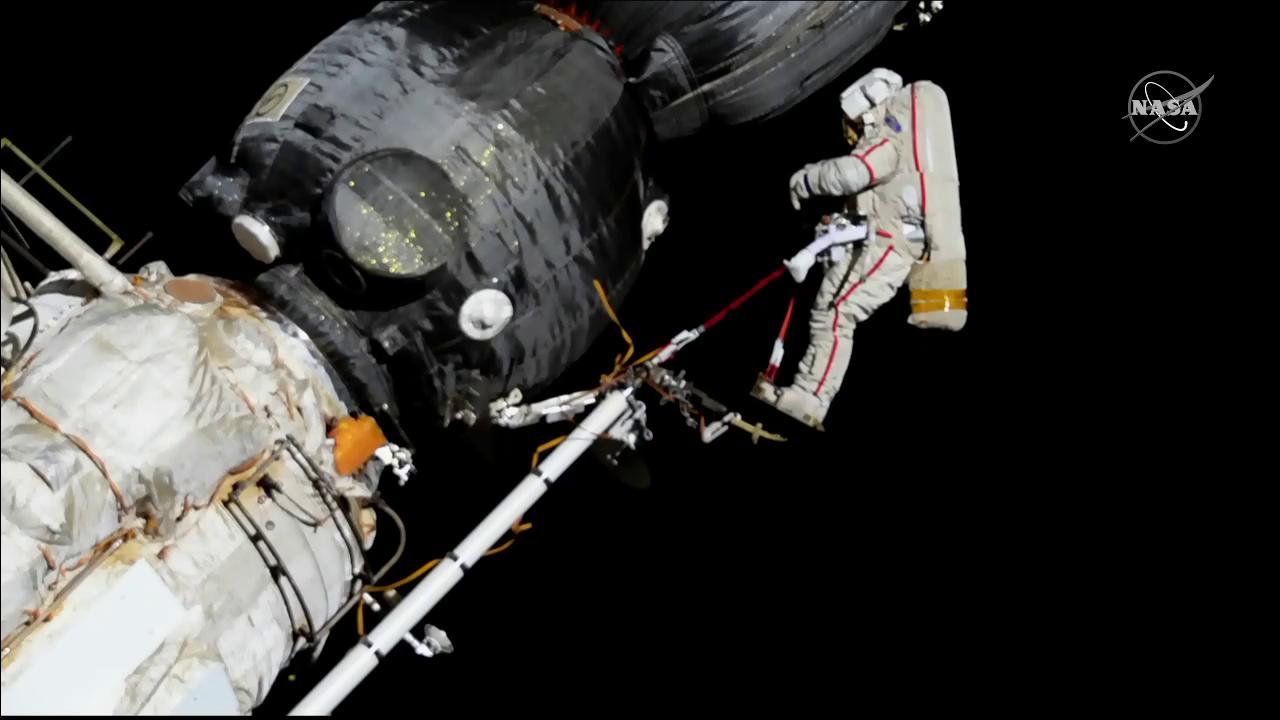
The Expedition 71 crew is getting ready for a spacewalk on Thursday while finishing payload operations inside a U.S. cargo craft before its return to Earth. The International Space Station residents also investigated antibiotic resistance and participated in a cardiorespiratory study on Wednesday.
Two cosmonauts will exit the orbital outpost’s Poisk airlock at 10:55 a.m. EDT on Thursday for a planned seven-hour spacewalk. Station Commander Oleg Kononenko and Flight Engineer Nikolai Chub will work outside in the vacuum of space to install hardware and science experiments on the station’s Roscosmos segment. The duo from Roscosmos spent Wednesday finalizing their procedure reviews and completing checks and component installations on their Russian Orlan spacesuits.
Flight Engineer Alexander Grebenkin joined his cosmonaut crewmates for the procedure reviews and installed radiation detectors on the duo’s spacesuits. Grebenkin will be on duty Thursday helping Kononenko and Chub in and out of their Orlan spacesuits and monitoring them while they work outside the space station.
Watch the year’s first spacewalk live on the NASA+ streaming service via the web or the NASA app beginning at 10:30 a.m. Coverage also will air live on NASA Television, YouTube, and on the agency’s website. Learn how to stream NASA TV through a variety of platforms including social media.
Meanwhile, in the opposite side of the station, the astronauts are packing the SpaceX Dragon spacecraft with completed experiments and their research samples for return and analysis back on Earth. NASA Flight Engineers Tracy C. Dyson and Matthew Dominick removed science freezers containing the critical science from inside the station and transferred them to Dragon for stowage. NASA Flight Engineers Mike Barratt and Jeanette Epps assisted with the experiment loading and prepared more research hardware that will soon carry biology samples back to the planet.
Earlier, Dyson pedaled on an exercise cycle while attached to sensors measuring how heart activity and breathing in microgravity affects a crew member’s blood pressure. After Dominick wrapped up his cargo activities, he serviced cardiac tissue samples printed inside the BioFabrication Facility and loaded them inside a MERLIN research incubator.
Barratt and Epps spent half the day exploring why microbes are more resistant to antibiotics in space. Barratt worked in the Kibo laboratory module processing bacteria samples in the Life Science Glovebox. Epps selected some of those bacteria colonies then moved into the Harmony module and extracted DNA from the samples for genomic analysis. Results may help researchers understand how bacteria adapts to weightlessness and develop ways to protect space crews and humans on Earth.
Learn more about station activities by following the space station blog, @space_station and @ISS_Research on X, as well as the ISS Facebook and ISS Instagram accounts.
Get weekly video highlights at: https://roundupreads.jsc.nasa.gov/videoupdate/
Get the latest from NASA delivered every week. Subscribe here: www.nasa.gov/subscribe










